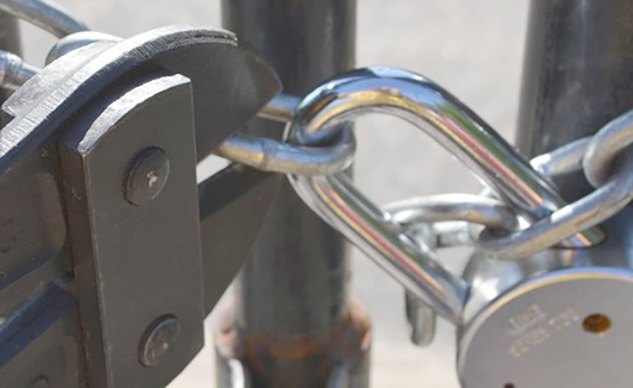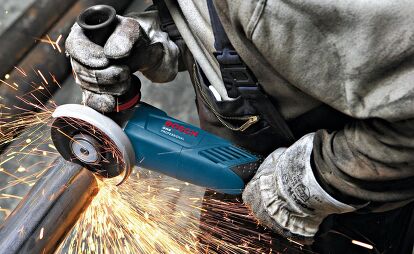6 Things About Motorcycle Locks Thieves Don't Want You To Know
A security expert shares ways to foil thieves who want to steal your bike
The locks you use to secure your motorcycle matter. Thieves are on the lookout for certain weaknesses, and they know what to look for. There are several things that criminals don’t want you thinking about because you could make their job a lot harder. So here is what you need to know to get the best of a thief who is looking at your motorcycle.
1. You Get What You Pay For
If it were up to criminals, every motorcycle would be secured by nothing more than Master Locks and threaded cables. In the security world, you get what you pay for. When you go to your local big-box store and pick up a lock costing less than $20, you are not investing in security. The biggest consideration needed for purchasing is to determine your price point. You should be prepared to spend 10% of what you paid for the bike on the lock you use to secure it. If your ride is priceless, then you can spend more.
Cheap locks are easy for criminals to cut, bump, pick, drill, shim, and even smash. With that low cost, companies are delivering a product with weak metal and very simple internal components. When getting a padlock, invest in something heavy and a bit more pricey. It is a few hundred bucks to save yourself the headache of dealing with theft, even if it ends in recovery.
2. Old Ignition Cylinders Can Be Picked
Standard motorcycle security has definitely gotten better over the years, but classic bikes have classic problems. Most criminals do not pick locks, but they do use simple techniques like raking or using tryout keys. These simple security bypasses will be enough to start most older model bikes. The engine will rev, and the thief can actually ride away on your motorcycle.
This is also an issue for some current models. Essentially, if your motorcycle does not have a transponder chip in the key, then it is susceptible to these kinds of attacks. In the case of tryout keys (a.k.a. Jiggle Keys, Auto Jigglers, etc.) a thief could walk up to a bike, and in the worst-case scenario, simply turn the key in the ignition to start your engine. In some cases, the criminal would have to try several different keys and jiggle them up and down in the keyway. If you care more about security than authenticity, you can take your motorcycle to an auto locksmith and get the cylinder replaced with an updated transceiver cylinder.
3. Locks Are Only As Good As What They Are Locked To
Some people will buy an expensive high-security lock and then put it on a common hardware-store chain. Pretty much any chain you get from a hardware store is going to be just as worthless as the locks they sell. If metal on your chain is weaker than the metal on your lock, then a thief will attack the chain with cutting, prying, twisting, etc. If both your chain and your lock are strong, then they might go after what they are secured to. This would bypass the motorcycle lock altogether.
Bicycle thieves have cut down trees to get what they were after. Motorcycle thieves will do a lot more, so you need a solid anchor point. When you are at home, you can use a ground anchor, which is cemented into the floor. And while you are out, you can use telephone poles and street lights. Be cautious of sign posts, as these are sometimes dummy poles, made so that it is easy for a criminal to remove. Attaching a disc lock is good as long as you have a strong steering column lock that won’t break easily.
4. Harder Steel Means Harder To Steal
Because most criminals are just going to try to break the lock, the better the metal, the better your security. For a padlock, you want a thick metal body and a hardened shackle. Right now, most of the high-security locks use a boron polymer steel. It is stronger than hardened steel and holds up extremely well against bolt cutters of any size. If you add a shroud, then the lock gets even more secure. A shroud is more metal that comes up from the body and covers the sides of the shackle. This gives less exposed area to cut, especially when the lock is closed around a chain or hasp.
Hardened steel pins can be used in the lock’s core so that the device cannot be drilled open. With anti-drill plates over the keyhole, drills can even be prevented from biting into the metal. It all comes down to adding more metal to the lock. With the best locks, you can feel the difference in weight. But consider how heavy a lock you can practically use on your bike.
5. Use a Full Release Shackle
Whether you are using a U-lock or a padlock, it is better to use a product with a full release shackle. This means that the shackle comes out of the lock completely when it is opened. Opposed to most locks, which release one side, and retain the other side. Criminals hate shackles that release on both ends. Instead of making one cut on your lock, now they have to make two. Cutting only one side still leave the device relatively secure.
Granted you should replace a lock with one side of the shackle cut, but your motorcycle will be safe. If the criminal recognizes the lock type, this may be enough for them to move on to an easier target.
6. Nothing Stops an Angle Grinder
On the flip side of neglect, there are also motorcycle owners who think their security is invulnerable. They believe that no one is going to get through their S&G 951C and Pewag chain. These guys have done the most they can do in terms of their locks, chains, and anchors, but it is still not enough. If a thief wants to cut through your security, they can always use an angle grinder.
That is why it is important to use more security for your motorcycle than just locks. Investing in alarm systems, GPS trackers, and even just parking in well-lit locations can do a lot to help your security. Thieves would like you to only focus on one aspect of your security. If you aren’t thinking about your locks, that is what they will use to steal your bike. But if you are only thinking of your locks, they will exploit your other oversights.
Conclusion
Motorcycle owners need to invest in better locks. Vintage bike owners should be aware of the special vulnerabilities that their vehicles have. Everything should be strong, from your anchors to your chains, and especially your locks. The lock construction can also stump a thief entirely, or just make their task a whole lot harder. But remember that having the best lock in the world does not mean that you are safe. A criminal will always look for the flaw in your security, so be sure to consider everything.
Ralph Goodman is the resident expert on locks and security over at the Lock Blog where keys, locks and safety are discussed, offering tips, advice and how-to’s for consumers, locksmiths, and security professionals. Goodman can be reached at ralph@united-locksmith.net
More by Ralph Goodman



































Comments
Join the conversation
I use two wheel locks and a hand brake lock
Where you park your bike is another very important issue take into consideration. This, in combination with a rock solid lock will made thieves lives much much harder.